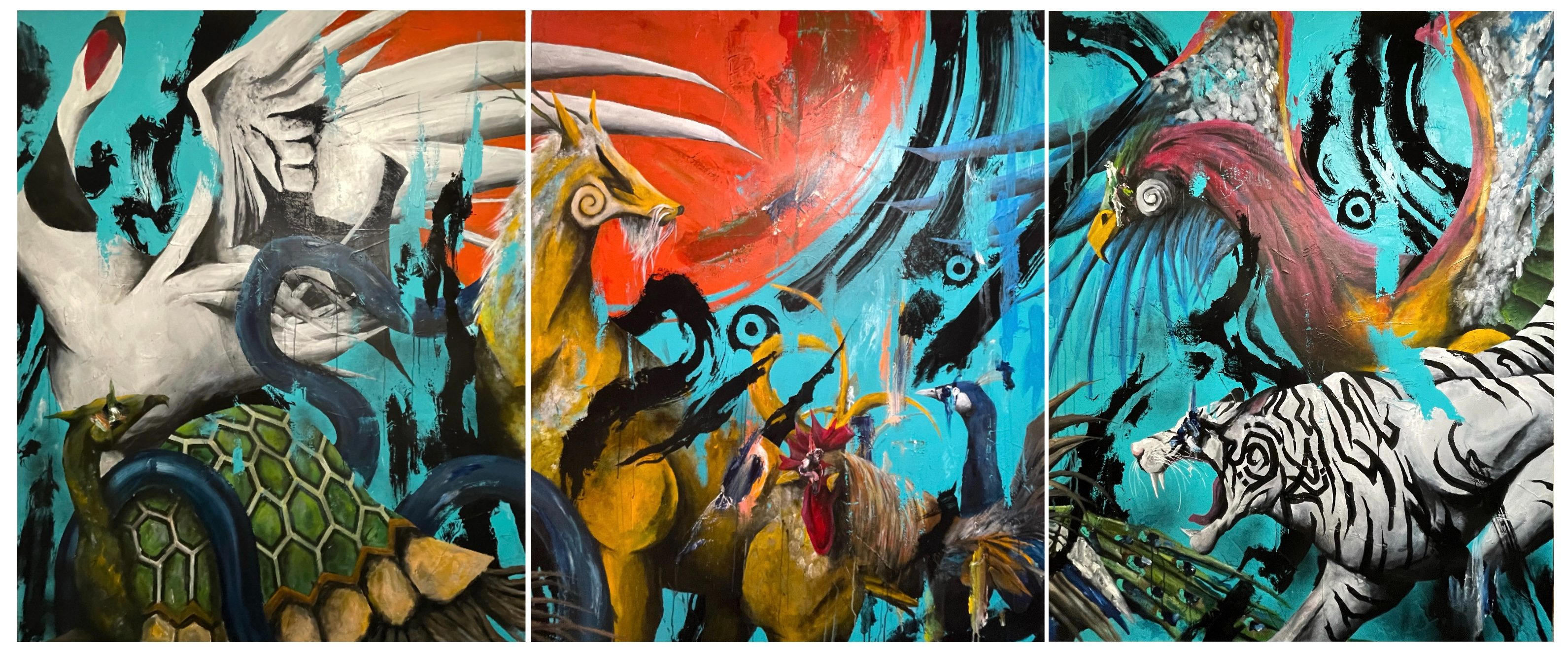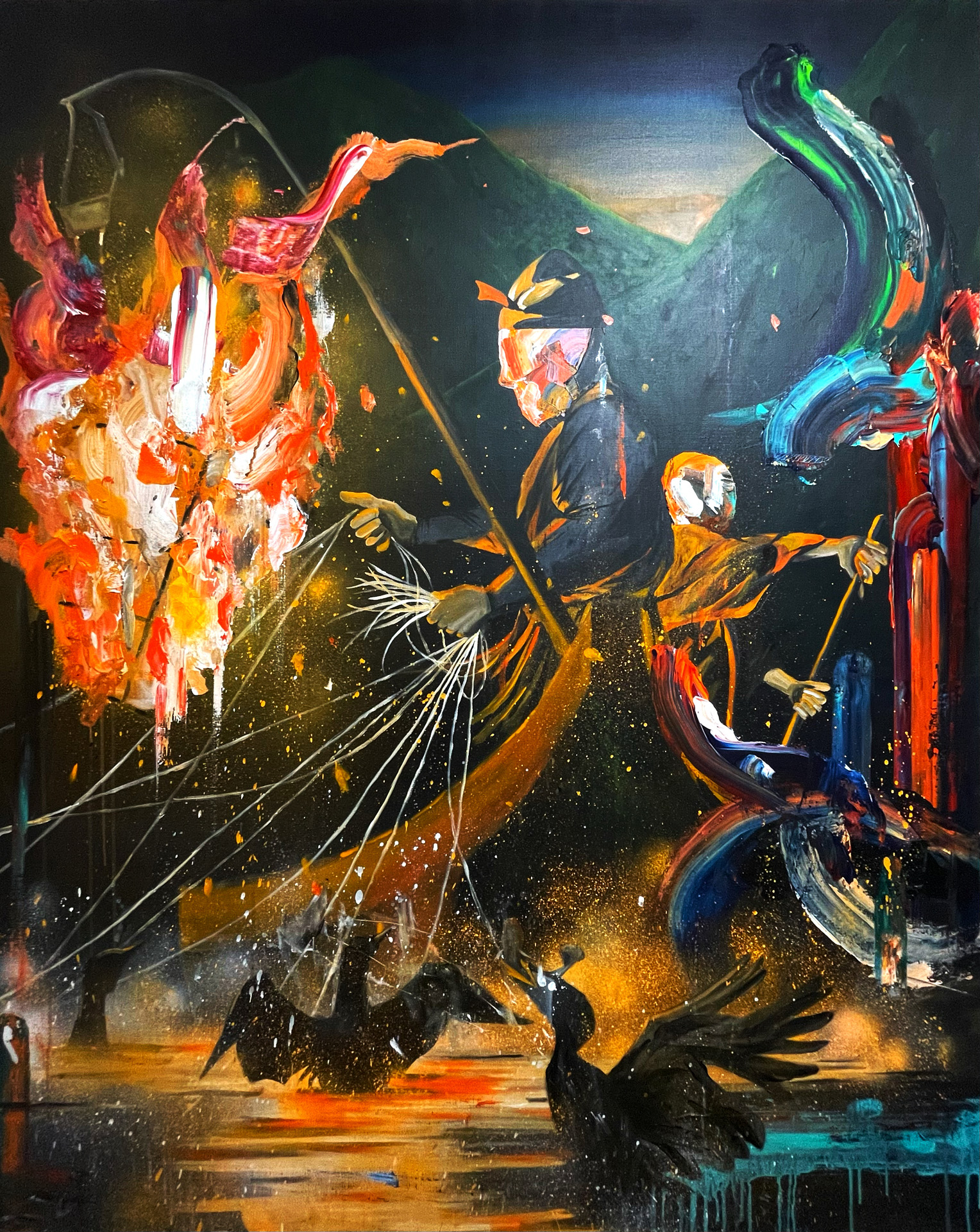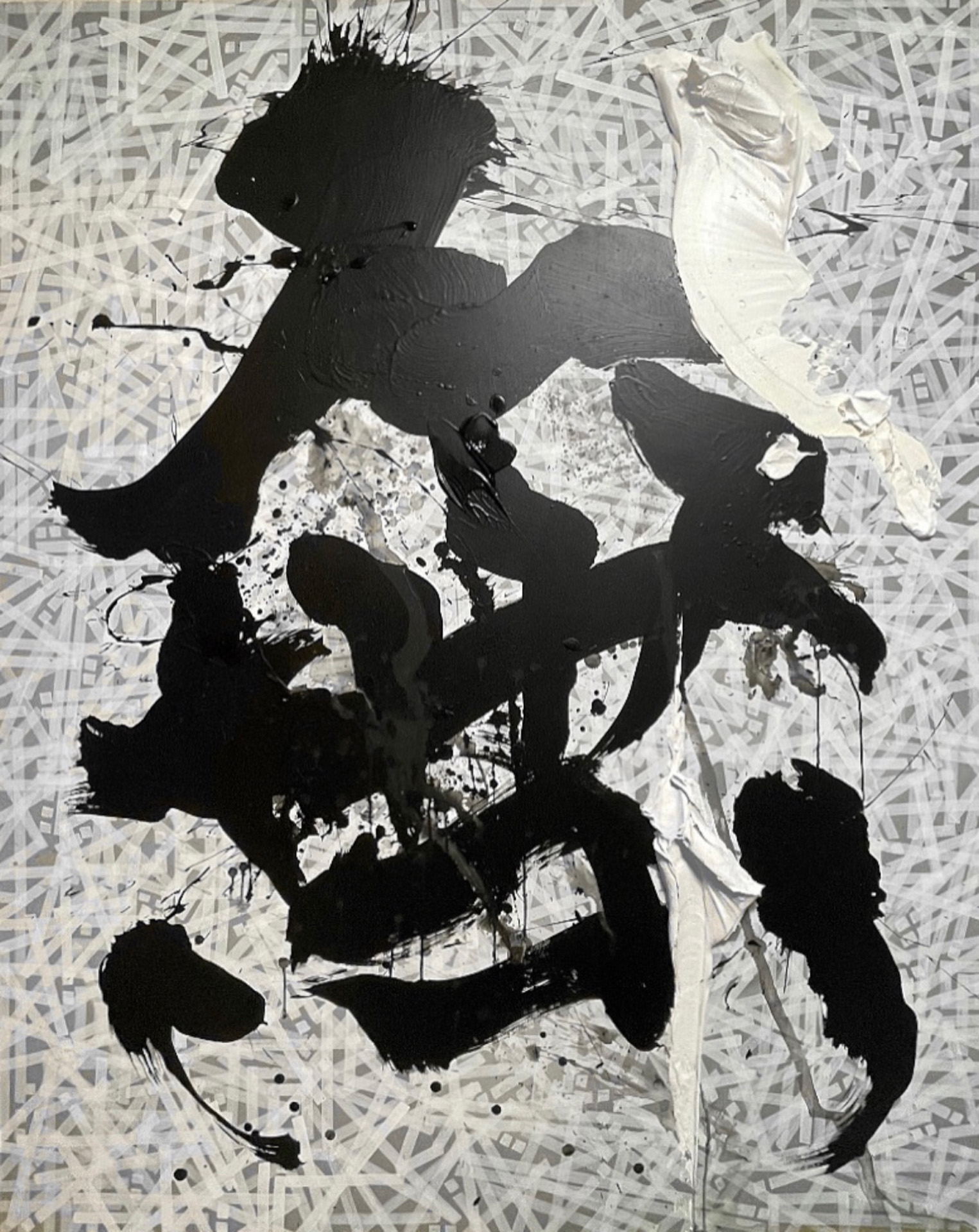Passion left for the future
With a background in calligraphy that he began at the age of eight, contemporary artist Masaru Mayumi pursues unconventional expression through not only letters but also abstract painting. He finds vitality in Chinese characters, which have a history of over 3,000 years, and uses not only ink but also acrylic paint to express their colors. His works, which capture the characters as if they were plants and animals standing majestically in a vast landscape, convey a strong sense of vitality and suggest new possibilities for expressing letters.
Burning Japanese Culture
Mayumi, who is currently based in Kyoto, sometimes walks around the city without a smartphone or wallet. As she walks, she thinks, "Why do I leave behind works of art? What is at the origin of who I am?"
"In the city of Kyoto, people are surrounded by things that are closely linked to their lives and have been passed down for a long time. Japan's seasonal scenery and customs are by no means a thing of the past; they are still alive today."
Mayumi strongly recognized that her own values are rooted in her Japanese identity. She said, "Rather than a discovery, it felt like I had finally opened a drawer that had remained closed." It was her solo exhibition "PAINTINGS" held in Kyoto last fall that triggered her to realize that everyday life is filled with things that only Japanese people can express, and to sublimate them into her own expressions.
One of the works born from that time was "Umagoi". It depicts the scene of cormorant fishing that he had been taken to by his parents to watch since he was a child, with the vividness of feeling the sharp sparks and the warmth of the flames on his skin, as a landscape imaginable in the Japanese mind. This passion that has been passed down by ordinary people, and the faith that keeps them calm, are also considered "passions", and this is what should be passed down to future generations, and this is what he approaches in this exhibition "Quiet Passion".
"The flame that is ignited will never be put out.
Even though it is influenced by various events and is torn apart, the flame continues to burn brightly.
The source of that flame is the spiritual power of words, the gods and Buddhas, and the culture that has been passed down through the generations in Japan. In this modern age where new things are born and disappear without a moment's pause, these things no longer have absolute existence.
But even in these times, and especially in these times, there is something we can leave behind for future generations. We face the world with a power that can never be seen with the naked eye."
Mayumi's creative motive is to escape the trap of thinking that a calligrapher is someone who writes characters and a painter is someone who draws pictures, and to confront common sense and assumptions head on. Although the form of a letter, painting, or sculpture may differ, a work is a piece of the artist's flesh and blood. Mayumi says that the passion engraved in a work is not that of the artist, but that which lies dormant in the heart of the viewer.
In addition to the two-dimensional works, a three-dimensional work that took five years to conceive will be on display for the first time in Japan. The exhibition will feature 23 two-dimensional works that demonstrate Mayumi's passion for expression, which seeks to go beyond the realm of calligraphy, as well as four three-dimensional works made from bronze clay and finished with lacquer.
Emergence of Gravity of Letters
By placing ink on washi paper, characters acquire weight. Moving away from the "four treasures of the study" - brush, ink, inkstone, and paper - that define calligraphy, Mayumi's attempt to express the weight of characters will now extend from painting to three-dimensional works.
"The process of creating the work, layering clay over a core material to give it more substance, is a very physical experience. Unlike writing with a brush, you can't imagine what's going to come next, and seeing the weight of the letters come into being really brought to life gave me a renewed sense of the vitality of letters."
Mayumi says she has always had an image of letters appearing in space, and through the production of her three-dimensional works, she has been able to rediscover the theme of her creative activities, "oozing with life."
Before the invention of paper, characters, which developed as a means of human communication and recording, were written on clay tablets and animal bones. Paper was born for its convenience, such as its preservation and portability, and then it moved to digital. The history of writing can be seen as the release of gravity. Mayumi's series of works can be seen as a recapture of the original physicality of characters, such as clay and animal bones, and the grooves that appear when they are carved into them.
"I don't want people to forget that there was a real sense of passion in our times. I want to let that wave soar high and leave it as a message for the future."
Mayumi, now 25 years old, is from a generation that was born and raised in an era when words were "typed" rather than "written." The new generation is typing with the passion that words carry.








